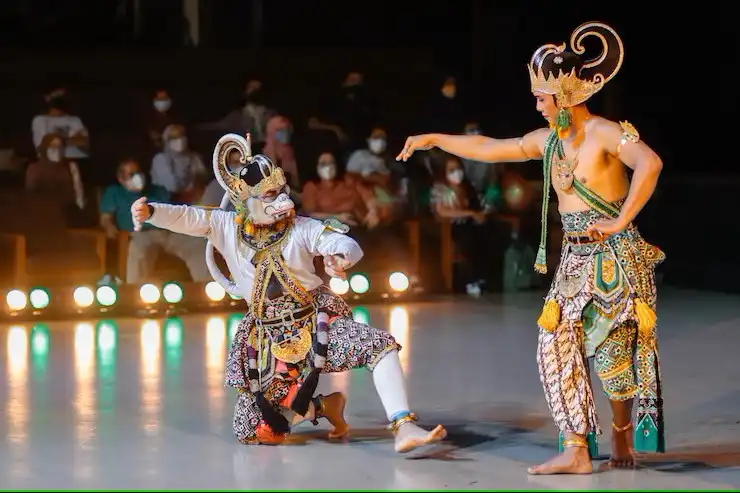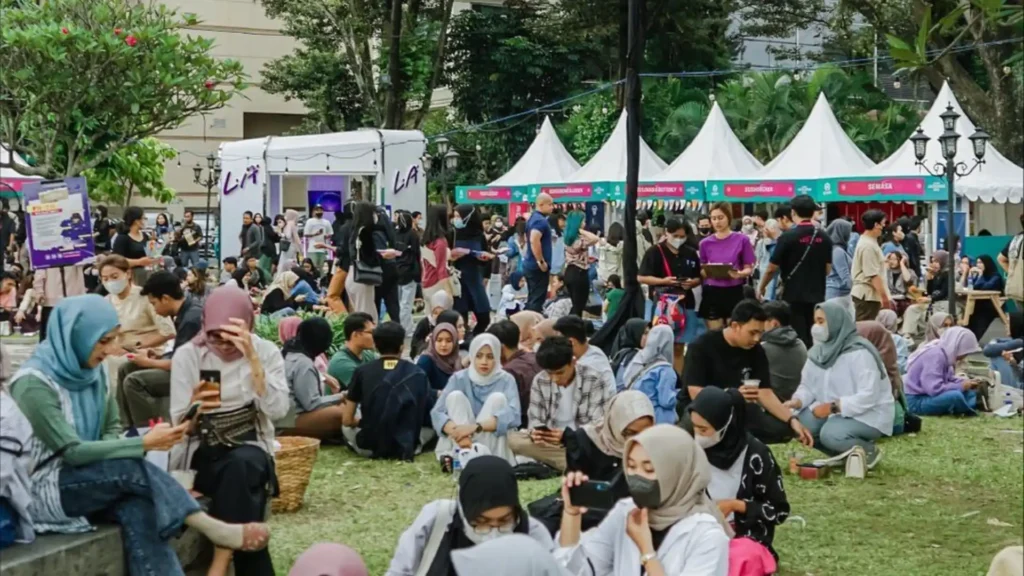Javanese traditional dance is more than just a cultural performance, it is a living expression of philosophy, values, and centuries-old history. Behind each graceful movement lies a symbolic meaning that reflects the soul of Javanese life and belief systems. From sacred palace rituals to vibrant community performances, each dance carries its beauty and depth.
Some dances are considered so sacred that they are only performed during special ceremonies. Curious to learn which traditional dances are treasured in Javanese culture and the deeper meanings behind them? Let’s explore five iconic Javanese traditional dances that beautifully embody the richness of this timeless heritage.
Table of Contents
1. Bedhaya
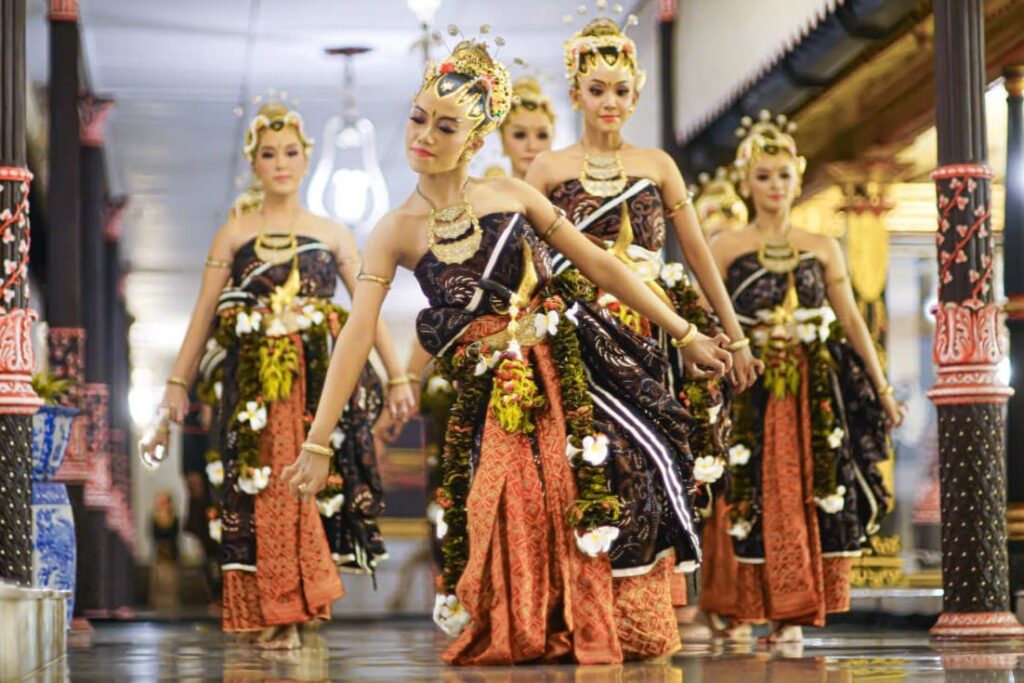
Bedhaya is a sacred court dance originating from the royal palaces of Yogyakarta and Surakarta. Traditionally performed as a tribute to Nyai Roro Kidul, the mythical figure in Indonesian folklore, revered as the Queen of the Southern Sea. The Bedhaya dance represents the spiritual connection between the king and cosmic forces. Performed by nine female dancers who undergo a purification ritual before the performance, Bedhaya is filled with profound symbolism. Every gesture reflects cosmic harmony and balance in the Javanese worldview.
This dance is usually reserved for highly significant royal events, such as a sultan’s birthday or coronation. With its slow, refined movements, accompanied by a gentle Gamelan ensemble and poetic Tembang Macapat, Bedhaya creates a serene and solemn atmosphere. Each dancer’s position holds a specific symbolic meaning and must not be altered. More than an artistic display, Bedhaya is a cultural legacy that blends spirituality, aesthetics, and philosophical depth.
2. Serimpi
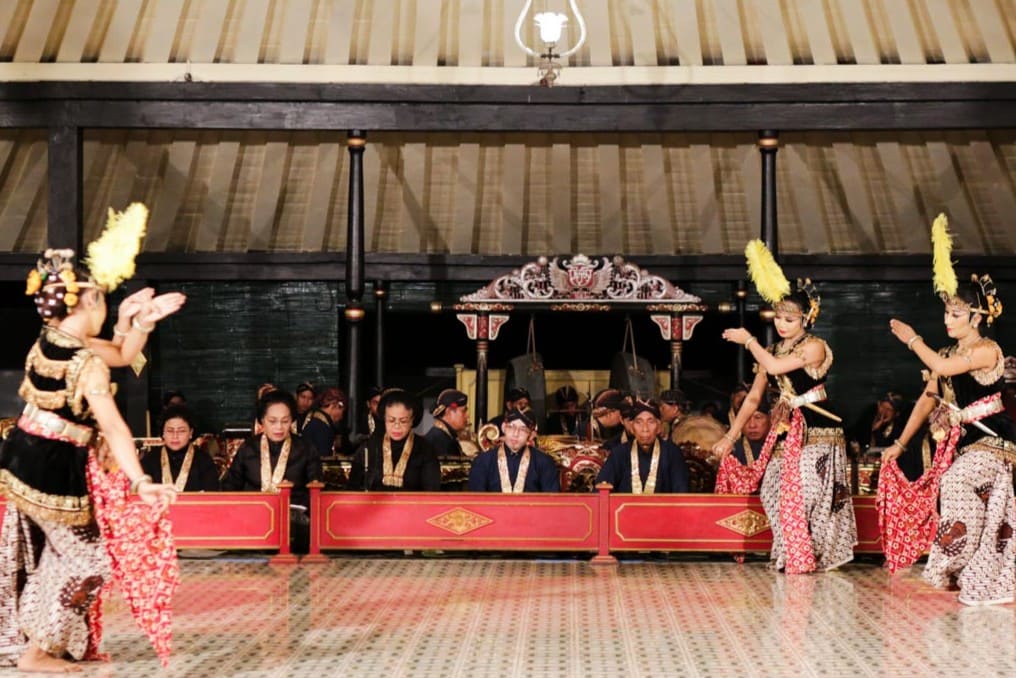
Serimpi is another court dance that holds deep philosophical meaning, focusing on inner peace and universal harmony. First developed during the Mataram Sultanate, Serimpi was originally performed only within the palace by noblewomen. Its name, derived from the word for “dream,” reflects the tranquil, meditative quality of the dance. It served as both an artistic offering and a symbol of refined royal authority.
The dance is performed by four dancers, each symbolizing the four elements, earth, water, fire, and air, as well as the four cardinal directions. Their movements are measured and precise, with every eye glance, hand gesture, and footstep conveying subtle meaning. The serene gamelan music, especially soft instruments like kenong and gender, enhances the peaceful ambiance. Though less rigid than Bedhaya, Serimpi remains a masterpiece of classical Javanese dance, showcasing feminine elegance and the spiritual grace of palace tradition.
3. Gambyong
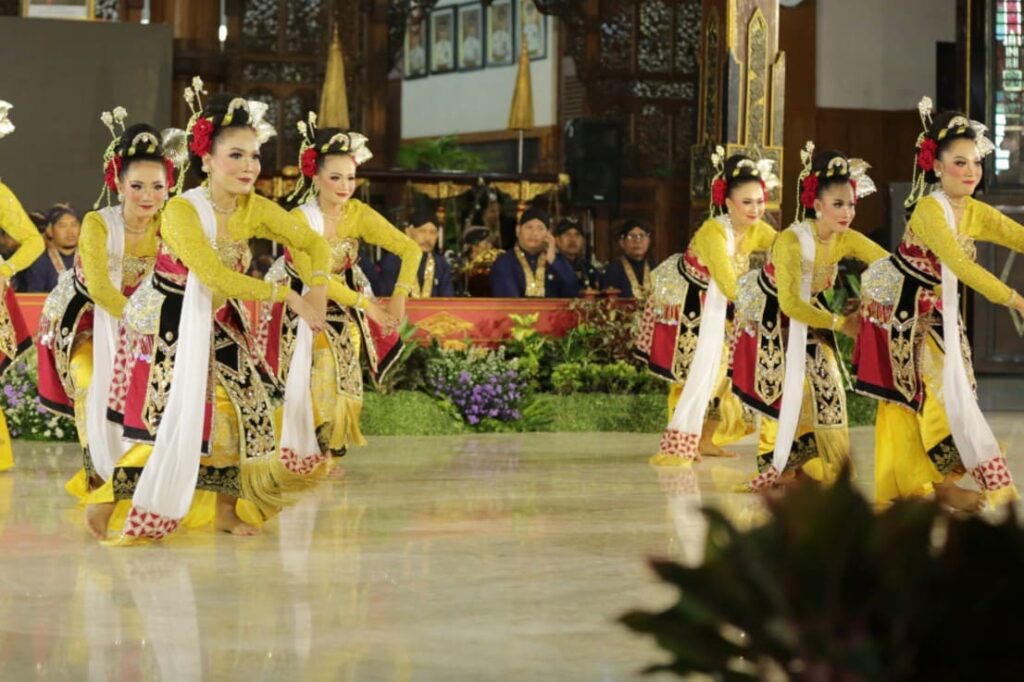
Gambyong has its roots in agrarian rituals and was originally performed as a tribute to Dewi Sri, the goddess of fertility and prosperity. Over time, this folk tradition evolved into a refined court dance, particularly during the reign of Mangkunegara VII in Surakarta. Under the guidance of dance maestro Nyi Bei Mintoraras, Gambyong was formalized and transformed into a performance that aligns with the court’s aesthetics and values.
Known for its fluid and delicate movements, Gambyong highlights the natural grace of Javanese women. Dancers usually wear greenish-yellow batik fabrics and traditional kemben, accessorized with jasmine flowers, symbolizing fertility and blessing. The choreography typically consists of three parts:
- The opening (maju beksan)
- The main dance (beksan)
- The closing (mundur beksan)
Accompanied by melodic gamelan music, with kendang leading the tempo. Today, Gambyong is not only a cultural identity of Surakarta but also performed on national and international stages, showcasing the harmony and elegance of Javanese dance to a global audience.
4. Gambang
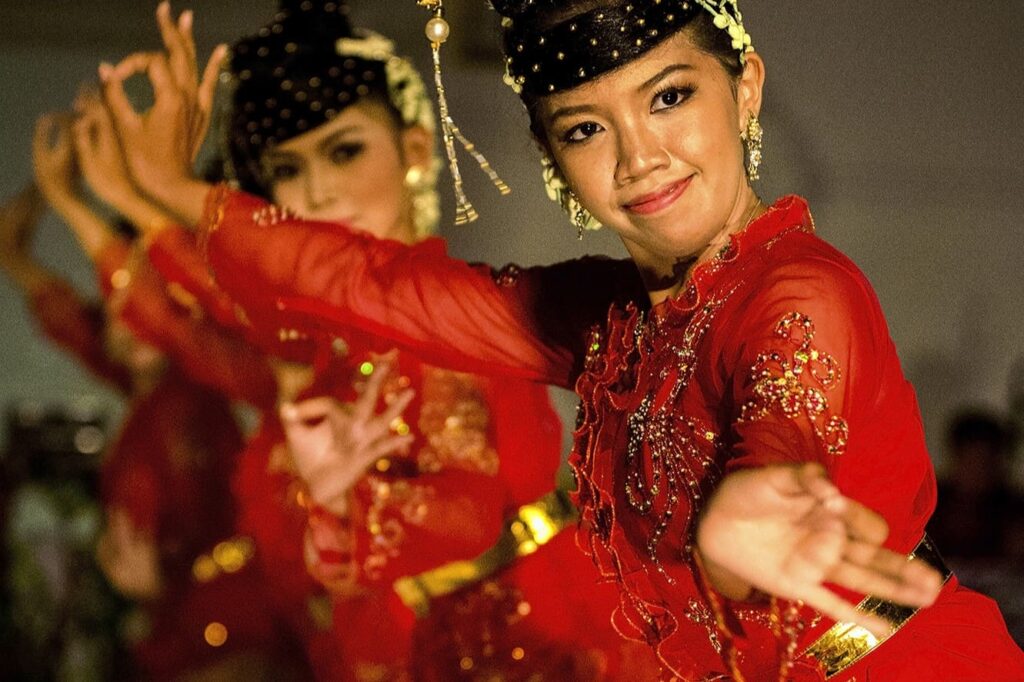
Unlike the rigid and symbolic dances of the royal courts, Gambang emerged from the urban communities of Semarang during the colonial period, reflecting a lively fusion of Javanese and Chinese cultural influences. Originally part of wayang orang performances, Gambang later developed into an independent dance genre that blends entertainment with subtle social commentary.
What sets Gambang apart is its vibrant energy and playful improvisation. The choreography mixes traditional Javanese dance movements with humorous expressions and theatrical storytelling. Its unique musical arrangement combines gamelan instruments like gambang, kendang, and bonang with Chinese string instruments, creating a distinctive soundscape. Costumes are flexible and colorful, often tailored to the story or character being portrayed. This cultural blend makes Gambang not only a source of entertainment but also a symbol of multicultural harmony in Javanese society.
5. Gambir Anom
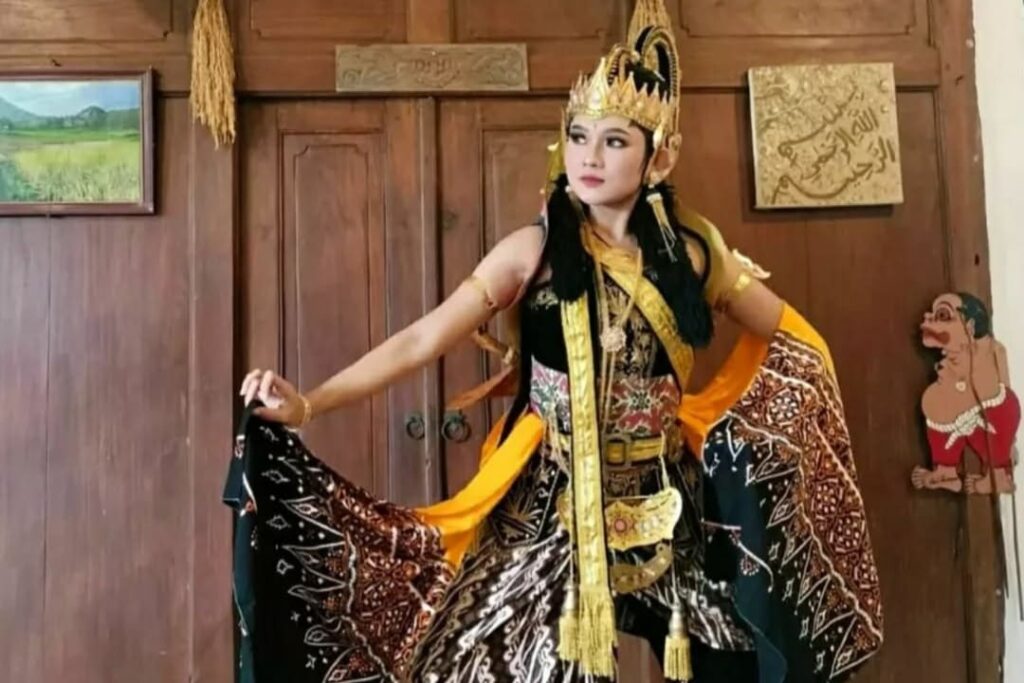
Gambir Anom is a solo classical dance from Surakarta that delves into the emotional journey of adolescence. Inspired by the story of Irawan, son of the legendary warrior Arjuna, the dance portrays a young man’s experience of falling in love for the first time. It marks a transition from youthful innocence to emotional maturity—a theme rarely explored in traditional court dances.
The dance unfolds with gentle, introspective movements that mimic everyday actions of someone in love, such as combing hair, adjusting clothing, or pacing. These subtle gestures require the dancer to express deep emotion through body language and facial expressions. The accompanying music is soft and lyrical, enhancing the tender and romantic mood. With its rich emotional nuance, Gambir Anom resonates with audiences on a personal level, making it both visually captivating and emotionally moving.
Javanese traditional dances are more than cultural relics, they are living expressions of wisdom, elegance, and identity. Each dance, from the sacred Bedhaya to the heartfelt Gambir Anom, carries a unique story and purpose. Their diversity reflects the richness of Javanese heritage and the enduring beauty of its values. By preserving and celebrating these art forms, we help pass on a meaningful legacy to future generations.

